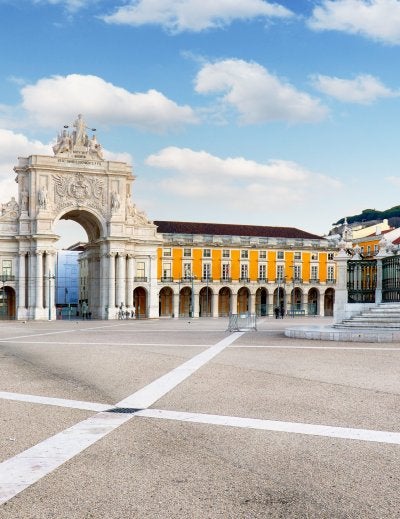
Naples National Archaeological Museum: A Detailed Travel Guide
The Naples National Archaeological Museum, known in Italian as Museo Archeologico Nazionale di Napoli (MANN), is one of Italy’s most impressive museums and a highlight for anyone visiting southern Italy. It’s home to an extraordinary collection of artefacts from ancient Rome, Greece, and Egypt, offering a fascinating look into the past. It’s also a must-see among the top Things to do in Naples.
Location and How to Get There
You’ll find the museum in the heart of Naples at Piazza Museo, 19. Its central location makes it easy to reach by public transport or taxi.
How to get there:
- Metro: Take Line 1 to Museo station, or Line 2 to Piazza Cavour. Both stops are just a short walk from the museum.
- Bus: Several routes, including the 147, 182, and 201, stop nearby.
- Taxi: From Naples Central Station or the port, it’s only a few minutes by cab.
- Walking: If you’re exploring the historic centre, you can easily reach the museum on foot.
Opening Hours and Best Time to Visit
The museum is open daily from 9:00 a.m. to 7:30 p.m., with last admission at 6:30 p.m. It’s closed on Tuesdays, December 25, and January 1.
Some sections have shorter hours: the Egyptian and Magna Grecia collections are open only in the morning, from 9:00 a.m. to 2:00 p.m.
To avoid the largest crowds, plan your visit early in the morning or around lunchtime. Spring (April to June) is one of the best times to visit Naples for pleasant weather and fewer tourists.
Ticket Information
Ticket prices vary depending on type and eligibility:
- Standard adult ticket: about €15–€20
- Children under 18: free entry
- EU citizens aged 18–25: reduced rate (€2–€6)
- Artecard holders: discounted tickets
- Guided tours: from €44
It’s a good idea to book your tickets online ahead of time to skip queues.
History and Building
The museum was founded in the 18th century by the Bourbon kings, who began major excavations at Pompeii and Herculaneum. The building itself dates back to 1585 and has served several purposes over the centuries, including as a cavalry barracks and the University of Naples.
Today, the structure is admired for its grand Neoclassical architecture, with high ceilings, marble staircases, and stately columns that reflect the grandeur of the Bourbon era.
Collections and Highlights
Pompeii and Herculaneum Artefacts
The museum’s most famous exhibits come from Pompeii and Herculaneum, the Roman cities buried by the eruption of Mount Vesuvius in AD 79. Here, you can see frescoes, mosaics, sculptures, and everyday objects that reveal what daily life was like before the disaster. The celebrated Alexander Mosaic, found in Pompeii’s House of the Faun, is one of the most important works on display.
Farnese Collection
The Farnese Collection features massive marble sculptures discovered in Rome, including the Farnese Hercules, Farnese Bull, and Farnese Atlas. These masterpieces of ancient art are among the highlights of the museum’s Roman galleries.
Egyptian Collection
Located on the first floor, the Egyptian Collection is one of the largest in Italy and includes mummies, sarcophagi, and hieroglyphic tablets that shed light on ancient Egyptian religion and daily life.
The Secret Cabinet (Gabinetto Segreto)
This unique gallery contains ancient Roman erotic art and artefacts from Pompeii and Herculaneum. Because of its explicit nature, children under 14 can enter only if accompanied by an adult.
Other Collections
The museum also features prehistoric artefacts, ancient coins, jewellery, and objects from southern Italy’s Greek colonies. One of its most iconic pieces is Raphael’s horse head sculpture, said to bring good luck.
Visitor Experience and Tips
A typical visit takes about two to three hours, though history enthusiasts may want to spend longer exploring.
Tips for your visit:
- Buy tickets in advance to save time.
- Visit during quieter hours (morning or lunchtime).
- Lockers are available but small.
- Signs and guides are available in both Italian and English.
- The museum café serves coffee and light snacks.
Dining and Nearby Attractions
After visiting the museum, stop by one of the nearby restaurants or pizzerias in Rione Sanità to try authentic Neapolitan pizza or local street food.
Because of its central location, you can easily combine your visit to the MANN with other attractions such as the Royal Palace of Naples, Chapel of San Severo, Catacombs of San Gennaro, or Naples Underground. If you have extra time, consider taking a day trip to Pompeii, Herculaneum, or even hiking Mount Vesuvius.
Why Visit
The Naples National Archaeological Museum is one of Europe’s finest museums for anyone interested in ancient history. Its unparalleled collections from Pompeii, Herculaneum, and Rome offer a rare opportunity to see the art and artefacts of civilizations that shaped the ancient world. For culture lovers and curious travellers alike, it’s one of the most fascinating things to do in Naples.
Author
-
We are the storytellers behind Exoticca’s adventures, passionate travelers dedicated to sharing the magic of the world with you. From bustling cities to serene landscapes, our team brings firsthand experiences, expert insights, and a deep love for discovery to every article. Whether it’s uncovering hidden gems or curating bucket-list-worthy journeys, the Exoticca Travel Crafters are here to inspire, inform, and guide you as you explore the globe.
View all posts

